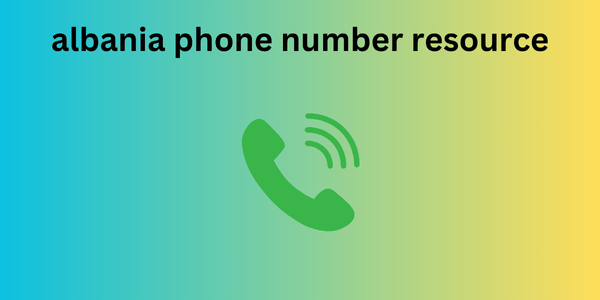Infographic example
What is infographics
If you can't tell for sure whether it's an illustration, a graph, or a text note, it's probably an infographic.
Infographics combine graphical representation with textual and numerical explanations.
Unlike standard charts, this format is more stylized. It uses original design solutions for the following purposes:
Attracting attention;
Clarity, ease of perception;
Reflection of the corporate identity of the customer company.
The legend and hints accompanying the graphics are as concise as possible and express the main idea of a particular element.
What is the difference from an illustration?
Infographics and illustrations differ in their semantic load. Infographics are needed for fast albania phone number resource compact, bright and interesting presentation of material. It is a self-sufficient object of information. Illustration decorates the text, breaks it into easy-to-read blocks, but cannot exist without text.
Infographics display necessary or simplify complex information through graphs, charts, and diagrams. An illustration is most often a picture or photograph and does not carry any additional information.
What's good about infographics
Infographics can convey large amounts of information without the audience getting tired of perceiving it. 3–4 information slides look better and more advantageous than long and boring text. Interesting and creative presentation of information attracts the attention of the audience. That is why speakers often use infographics in public presentations and reports.
Where infographics are used
Infographics are used in the media, digital media, textbooks, presentations, advertising. They are used in articles, quarterly and annual reports, research results, when advertising a product or service, writing user manuals or safety instructions that will be understandable to everyone. Popular science, technical and educational sites use infographics to explain the structure of equipment.
Marketing

Read also:
Chatbot Builders: How to Create for Business, Selection of Services
Types of infographics
Before creating infographics, determine its purpose, depending on which the employee will choose the required type of display. You can place a logo at the bottom of the image - when published on other resources or reposted, it will additionally advertise the company. Let's consider 10 popular types of infographics.
Timeline Infographics
Chronological infographics are used to show the chronology of events. For example, the development path of a company from its foundation to the current year. The information is displayed via a timeline — a line with key dates and events marked. If there are fewer than 10 dates and events, the timeline is drawn as a straight line, and if there are more than 10 — a curved line so that the information is easier to read. Significant or intermediate dates and events are highlighted with a large font and an icon.
Comparative type of infographics
This type of infographic compares company objects, brands, shows the situation before and after. A vertical divider is drawn in the middle, and the objects being compared are on both sides. At the end, a brief conclusion can be made for the reader, but this is not necessary.
Type of comparative infographic
Geographic infographics
In geographic infographics, use maps with callouts. Write important information on the map in large font and highlight it in color. Example of this infographic: a world or continent map is a convenient way to show the location of a company's offices, the number of employees in each office, and other information about the organization.
Statistical infographics
The results of research, social and professional surveys are displayed here. Be careful with static infographics: if the picture is overloaded with numbers and graphs, the reader will quickly get tired. If the infographics can be simplified, simplify it. Highlight the main accents with color, large icons and font.
Historical infographics
Historical infographics are similar to chronological ones: they show historical events, dates, and sequence. Most often, this is a timeline of events from the earliest to the current year. Emphasize accents with headings and icons. In historical infographics, events need to be interconnected.
Hierarchical view of infographics
Shows the structure, hierarchy and orderliness of a company or department. The pyramid principle is most often used: the CEO is at the top of the pyramid, the department heads are one level below, the department heads are one level below, and the employees are at the base of the pyramid. Hierarchical infographics can be displayed as a pyramid, circle or any branched form.
Social infographics
This is a type of infographics that reflects social problems and ways to solve them. Social infographics are based on statistics and facts, and visual images are published in them to enhance the effect. More often, social infographics are a message to society with an urgent problem.
Processes in infographics
Show the sequence of stages in the work of complex systems. Break the picture into steps and link them into a single chain: you will get a scheme according to which an employee or client can work. If the process has a large number of steps, do not complicate or overload the infographic. It is better to divide the entire process into enlarged parts and make a separate picture for each of them.
